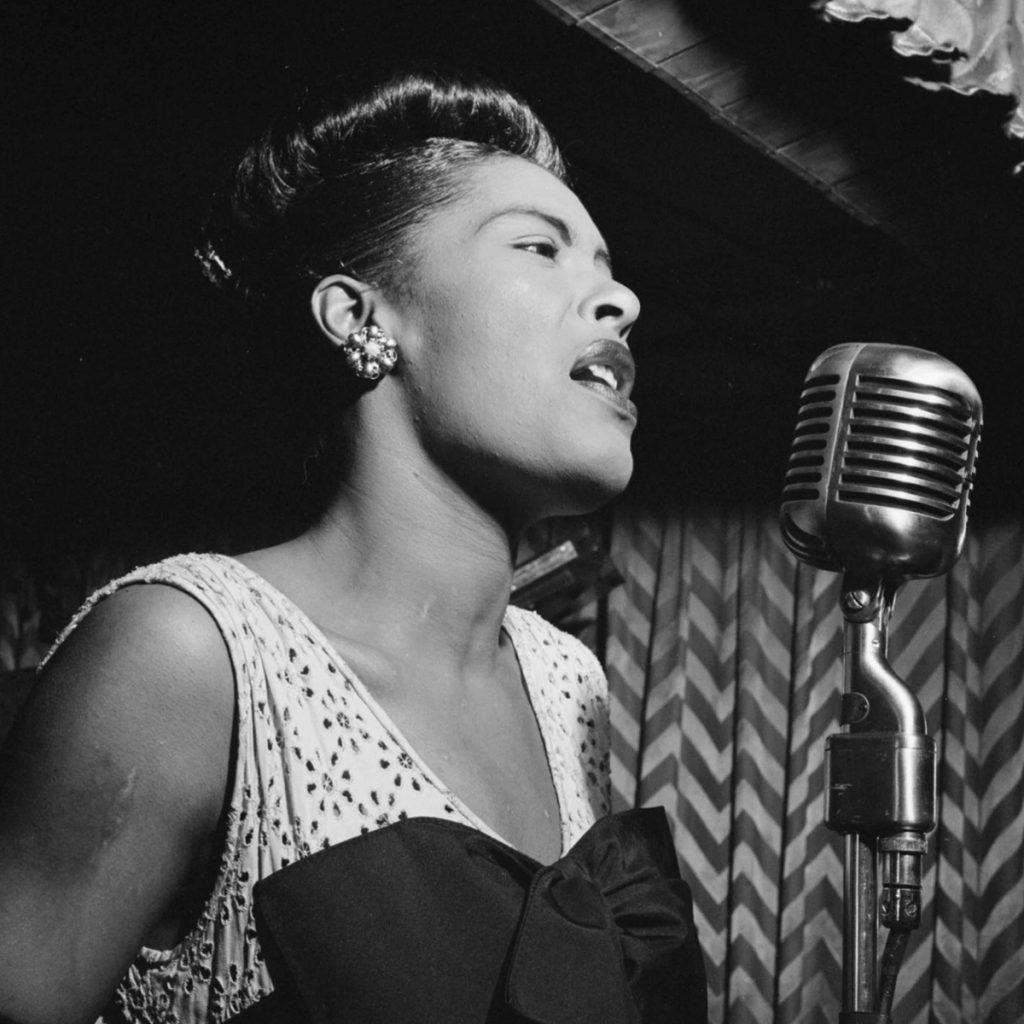Ellie Irons and the Art of Survival in “Invasive Pigments”
Using paints made from weeds, the artist explores the interaction between NYC and its inhabitants

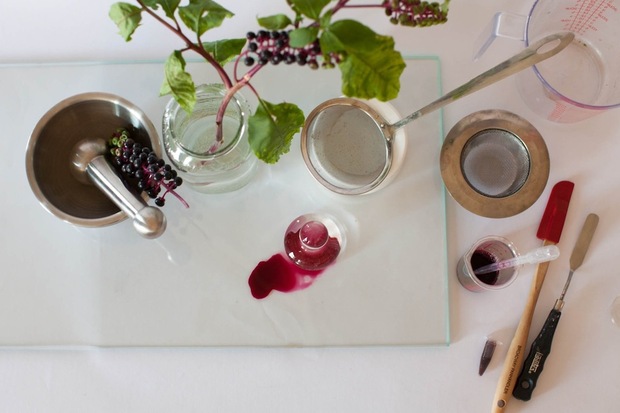
The unofficial colors of NYC seem to be shades of gray and black, found in the wardrobes of the average resident to the concrete pavements and city streets. Though not entirely true, one color that is generally thought to be missing from view is green. Artist Ellie Irons would argue that people just haven’t been looking hard enough—and that the plants growing every day in the seemingly hardened environment have simply been ignored.
Irons is addressing this idea through an unusual botanical art exhibit “Invasive Pigments,” opening today, 7 November 2014, at Brooklyn’s Silent Barn. Irons started exploring the idea of what she calls “spontaneous plants” in 2012, when she was experimenting with making paints from algae that had been growing in a sculpture in her studio. Thinking it would be interesting to work with other plant-extracted pigments, Irons began hunting for plants in her own Bushwick neighborhood. Despite the area being mostly covered by impervious surfaces, Irons discovered plenty of greenery growing around her. Plants can grow in the most unexpected areas—such as the Oriental bittersweet vine that rooted itself in the radiation-poisoned Superfund site that straddles the Ridgewood/Bushwick border.
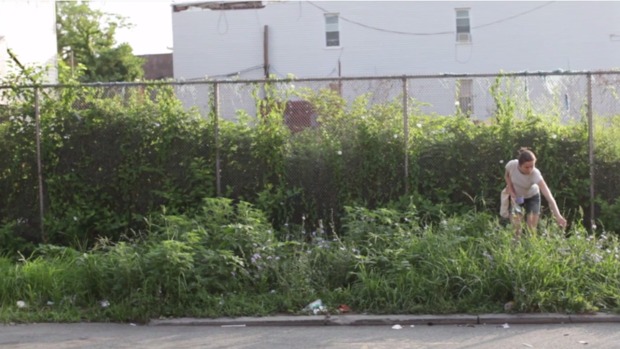
Irons started nurturing the plants that she found, harvesting them for pigments for her artwork, which will be featured as part of “Invasive Pigments.” Through this process, Irons has also cultivated a metaphor for total ambition and survival, even in the face of the harshest conditions. Though the plants that Irons works with are often considered “invasive” or non-desirable, they have come from all over the world, resisting constant threats while making this concrete jungle their home—a very New York state of mind. Below is our interview with the artist.
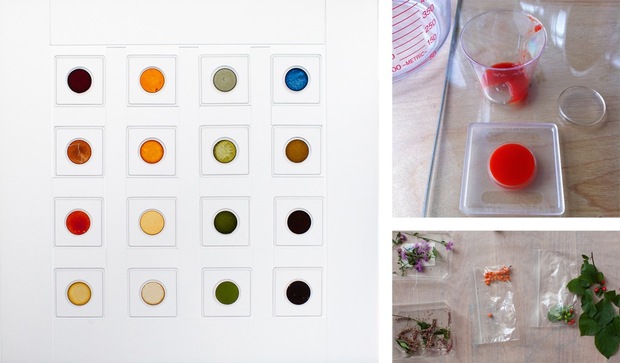
What drew you to study unintentional plants, and how long have you been pursuing the research?
I find plants fascinating in general. They are a staggeringly diverse life form, they have the ability to manufacture a huge array of chemicals, pigments and nutrients (using energy from the sun!) and they form symbiotic relationships with other life forms. For this project I’m focused on “spontaneous plants,” those plants that grow and reproduce without human input or maintenance. I’m interested in the fact that these plants are often overlooked when we think about what is of value in our urban ecosystems. As I’ve gotten to know these plants, I’ve found that they add tremendous value to the extremely urban habitat I call home.
Plants labeled as “invasive” have been culturally marked as non-desirable, but this is a context specific label that relates to a particular location and ecological niche. Often plants that are labeled as invasive in one place (where they cause economic or ecological damage, or are simply unfamiliar or “unsightly”) may be prized or protected in another context. Additionally, many of the qualities that that define an invasive species (ready adaptation to new circumstances, large population numbers, modification of the ecosystem to the detriment of other species) are qualities that human populations display as well.

Where have you been finding these plants? Any surprising species, or places you wouldn’t expect to find plants at all?
These plants grow everywhere! I’ve found them growing in the most challenging situations. Ailanthus sprouting from the side of a building where it’s been cut down again and again but keeps regenerating; white mulberry growing in a canyon-like gap between two buildings where it can’t get sun more than a few hours a day; and oriental bittersweet vine thriving on the grounds of New York City’s newest Superfund site at the border of Ridgewood and Bushwick, where radiation levels are high. One of the most mysterious species is Mile-a-minute weed, a rampant invasive vine covered with grabby little spines that produces strange purple and blue fruits in autumn. I’ve never seen it in New York City before, but it popped up in my garden at the Center for Strategic Art and Agriculture at Silent Barn.
You’ve been cultivating some of your finds—how have they fared under guided care?
It’s been really amazing to watch these plants grow in a protected, isolated situation. They’re growing in rich soil, without exposure to the usual threats of urban life, like being ripped out by the super, or sprayed with poison by city, or mowed down by an overzealous tenant. I’ve watched them grow bigger, brighter and more zealously than I’ve ever witnessed them on the city streets—as healthy and vibrant as they were, the plants all had to compete! Asiatic Dayflower, which on the city streets usually looks like a small, innocent wild flower, revealed its “superweed” abilities in my Invasive Pigments garden, growing three to four feet high as is struggled to reach sunlight… the Mile-a-minute weed, with its nasty little spines, grabbed onto everything else and crushed it, so I found myself doing “plant surgery” and cutting it away in pieces to try to save my pokeweed plant, which produces a fabulous magenta pigment this time of year.
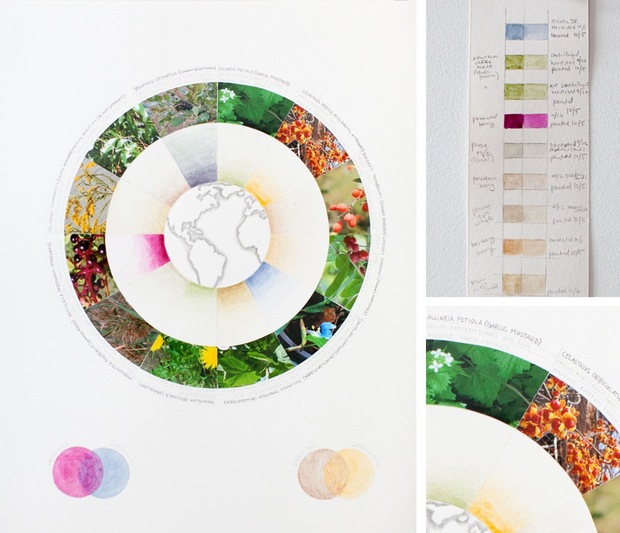
What is unique about plant-based pigments? Do you hope more artists will make their own?
For me, the most important aspect of these pigments is that they are a reflection of the landscape I exist in on a day to day basis. The living landscape, not the dead, plastic one we are so busy surrounding ourselves with. I’m interested in any technology, technique or medium that can help me feel more aware of and connected with my physical habitat. Making paints from the plants with which I co-habitate helps forge and maintain this connection. Of course I’m also pleased that the paint I make is slightly lower impact ecologically than the standard commercially available pigment, but I still use gum arabic to bind the pigments, which, although it’s a plant-based product, is wrapped up in all sorts of problematic aspects of global capitalism.
What do you think of the High Line’s attempt to recreate a garden of “native” NYC flora?
I actually really love the High Line as an experience, a place to visit, a hopeful direction for city living. Every time I visit I enjoy myself. That said, I tend to be skeptical of any attempt to recreate a “native flora” habitat. The spontaneous plants that I work with are the new natives, for better or for worse. They are now our local default, because we’ve changed the environment so extensively that many of the plants that thrived here 400 years ago are no longer able to live here without constant human intervention. So our native plant gardens become like any other garden: in need of constant tending and maintenance to prevent the influx of spontaneous plants, also known as weeds.
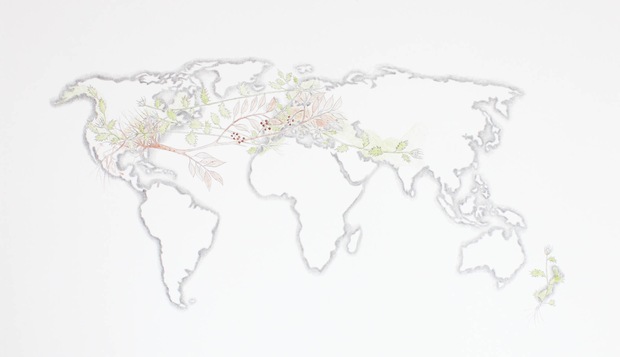
There are a lot of parallels that can be drawn to ethnic politics. Was this intentional?
If a plant is only native if it was growing on what is now US soil prior to the arrival of Henry Hudson, then are most of us humans also “non-native”?
This is definitely something that’s on my mind. It came to my attention as I learned more and more about the natural history of the plants I work with, many of which arrived in the United States as a result of global trade and immigration. I live in a neighborhood and a city that’s always in flux, and I feel like the plant population mirrors this flux in the human population, and reminds us that everyone has an immigration story in their family history, whether buried back centuries or being lived in the current day. If we consider a plant that has been present in the United States for more than 200 years “invasive,” how does that color our understanding of “native”? If a plant is only native if it was growing on what is now US soil prior to the arrival of Henry Hudson, then are most of us humans also “non-native”? Invasive species have several characteristics: they are flexible, resilient, able to take advantage of resources when they are available, good at traveling, and able to adapt readily to new environments. This describes the spontaneous plants I work with, but it also describes the human species. We also have invasive tendencies, and the plants that we live with in the city are the perfect companions, reflecting our weedy characteristics right back at us.
“Invasive Pigments” opens 7 November 2014 at CSAA/Silent Barn (603 Bushwick Ave, Brooklyn)
Images courtesy of Ellie Irons

